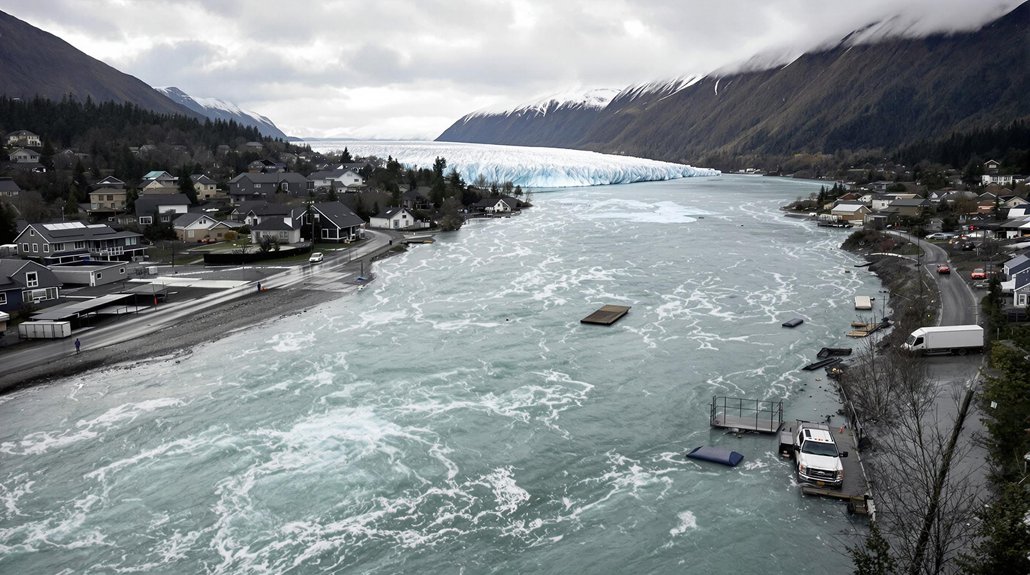Why are downpours becoming deadlier? Simple physics. Warmer air holds more moisture. More moisture means biblical deluges when storms hit. Global warming is basically turning the water cycle into a monster on steroids, and our cities are feeling the pain.
The numbers don’t lie. With 2°C warming, a whopping 85% of U.S. counties will likely see extreme rainfall jump by at least 10% on their worst days. Alaska and Hawaii are the unlucky winners in this lottery nobody wanted to enter – facing increases up to 43% and 30% respectively. Great.
Cities are especially screwed. Urban areas already struggle with normal storms. Now they’re facing rainfall “monsters” that overwhelm stormwater systems built for yesterday’s climate. Buenos Aires got slammed with 300mm in 8 hours. That’s not rain – that’s aquatic assault.
The scary part? This is happening everywhere. 126 out of 144 U.S. cities have experienced significant increases in hourly rainfall intensity since 1970. The U.S. South, Eastern Australia, Southern Africa – all getting hammered by these new super-storms. Even places getting drier overall still experience heavier downpours when it does rain. Mother Nature’s idea of irony, apparently.
The science is clear. It’s not just the Clausius-Clapeyron relation (fancy way of saying hot air holds more water). It’s also how different cloud types interact, creating perfect storms beyond what basic models predict. Recent research shows that cloud clusters combining both stratiform and convective rainfall types are responsible for most extreme flash floods. Climate scientists saw this coming. Nobody listened.
The human toll is staggering. Black communities along Atlantic and Gulf coasts face disproportionate impacts. Cities like Gaborone and Durban are seeing more damage due to rapid urbanization without adaptation. Critical infrastructure – roads, utilities, sewage systems – is failing during these events.
By 2050, U.S. flood risk jumps 26%. Economic losses are skyrocketing. Insurance companies are sweating. City budgets are drowning.
The bottom line? Our cities aren’t ready for what’s coming. These rainfall monsters are just warming up. Meanwhile, the transition to solar energy could help mitigate worsening climate impacts, with solar projected to provide up to 42% of U.S. electricity by 2035.
References
- https://www.climatecentral.org/climate-matters/heavier-rainfall-rates-in-us-cities
- https://phys.org/news/2025-04-extreme-rainfall-hypothesis-temperature.html
- https://www.worldweatherattribution.org/analysis/rainfall/
- https://wmo.int/news/media-centre/global-climate-predictions-show-temperatures-expected-remain-or-near-record-levels-coming-5-years
- https://www.epa.gov/climate-indicators/climate-change-indicators-heavy-precipitation








